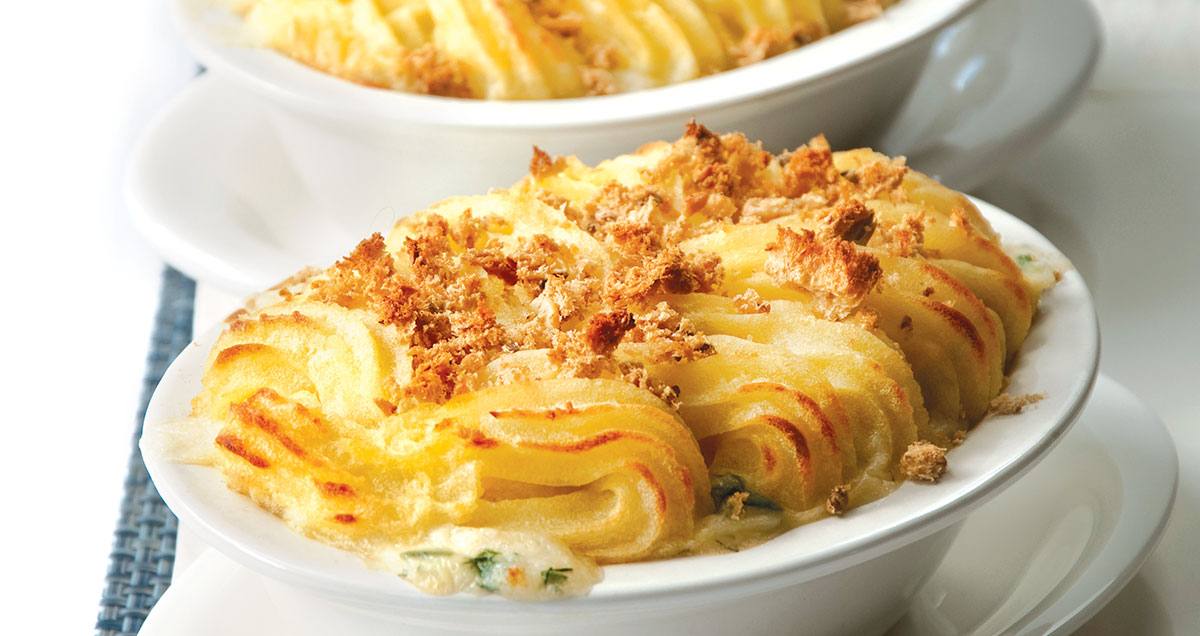, Step by step
Baked fish pie with mash

A great alternative to the classic British pie and a delicious way to eat more fish!
Method
-
Step 1
Melt the butter in a medium size saucepan, add the chopped onion and cook for 1 minute on a low heat.
-
Step 2
Add the flour and cook for 2 minutes over a medium heat. Then add the milk and fish stock a little at a time to make the sauce for the fish. Cook on a low heat for 10 minutes.
-
Step 3
Add the chopped dill, season with salt and pepper and reserve for later. Place equal amounts of the uncooked fish in 6 pie dishes and sprinkle over the fresh parsley and cooked carrot.
-
Step 4
Spoon over the sauce to 2/3 up the side of each pie dish. Fork or pipe the mashed potatoes on top of this and sprinkle over the cheese. Bake at 160°C for 25 minutes.
-
Step 5
Serve with minted garden peas.
Nutrition
Herbs like parsley and dill are the aromatic leafy green parts of plants they are a wonderful way to add flavour to dishes, especially white fish.
Parsley and dill both belong to the celery and carrot family of plants. Parsley comes in two main forms: curly leaf, often used as garnish, or flat leaf (Italian) parsley, which is more like the wild species of the herb and is now more popular. Parsley is a native plant of Mediterranean countries and is widely used in Mediterranean and Middle Eastern dishes. It was allegedly grown by the ancient Greeks and Romans, but not used as a culinary herb because of associations with death!
Dill has fine feathery leaves and is widely used in central and eastern European and Scandinavian dishes—frequently used to flavour smoked salmon and pickles. It grows as a native plant of the eastern Mediterranean and western Asia and its use dates back thousands of years, with evidence of its medicinal application as a soothing agent in ancient Egyptian texts.
Most herbs are used in relatively small quantities, so we generally disregard their nutritional contribution, but in a few dishes, such as tabbouleh, quite large amounts of parsley can be used, and this would provide useful iron and vitamins C, K and folate.
DR JULIET GRAY, COMPANY NUTRITIONIST


